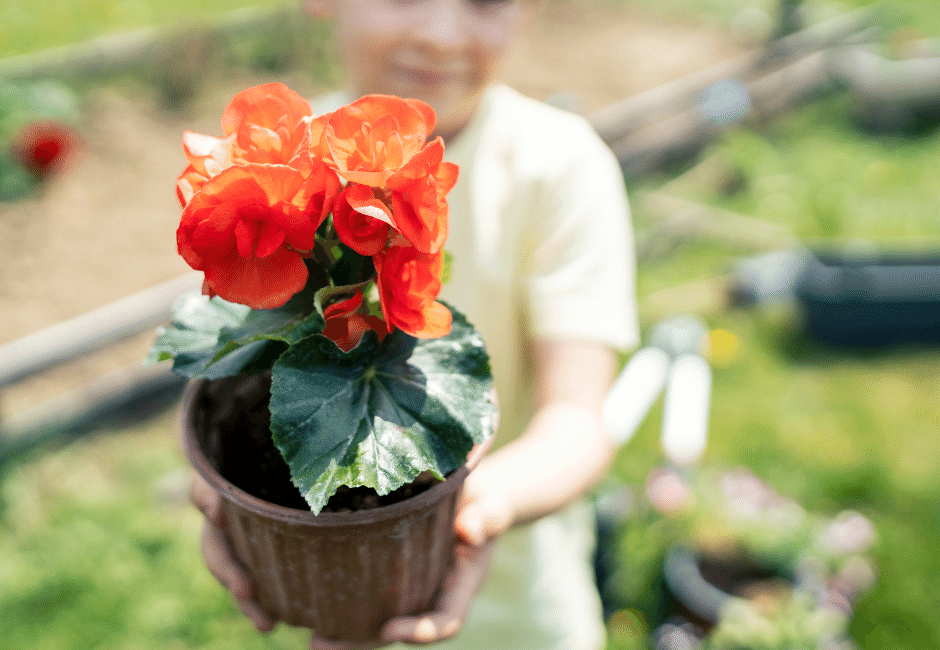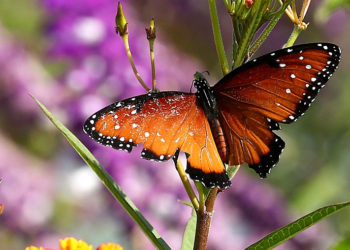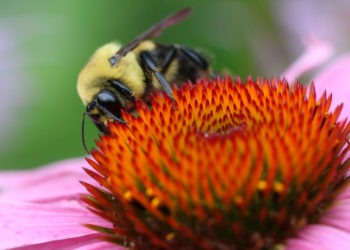Growing begonias and wondering why they haven’t dazzled you with beautiful blooms? Then this article is for you! Begonias are one of the most versatile and hardy flowering plants. They will even tolerate being moved in and out of the house as the seasons change. So there’s no reason to shy away from these adaptable beauties. Particularly once you’ve got the tips and tricks to help them reach their full potential.
First Things First: Do Begonias Prefer Sun or Shade?
As a tropical plant, most begonias are somewhat drought tolerant and thrive in heat and high humidity. But as a rule, almost all begonias will prefer at least partially shaded areas. (The Solenia® Begonia are the exceptions to the rule.) Your specific geographic location, as well as the type of weather you are having during any particular season, will determine the prime location for begonia success.
Begonias are True Warm Weather Plants
In addition to preferring partial shade, most begonias will not tolerate even the slightest bit of frost. This means that you need to wait until all danger of frost has passed before moving them outdoors in the spring. And bring them in if there is the least chance of frost as overnight temperatures start to fall.
Do Begonias Need to be in Containers?
Most people will tell you they have the best results growing begonias by keeping them potted and moving them indoors and out. However, some begonia growers (with green thumbs and plenty of time for their flower gardening) will replant them right into their flower beds. This of course means digging them back up and repotting them to bring indoors each fall. But some of these plants thrive for years and years. In all of these cases, adequate mulching to retain moisture and warmth seem to be the key, as is afternoon shade in hotter environments.
Growing Begonias: A Quick How to
Begonias prefer loose and fertile soil. They also like adequate air circulation and a well-draining location. If your begonia plants are in pots, ensure they do not sit in water. Allow the soil to dry somewhat between watering. Then water well, draining the overflow reservoir after the water has soaked right through the soil. If your potted begonia plants are outdoors, do the same after it rains. Begonias will also grow best when not overcrowded. So it’s best to repot or divide if they are crowded and appearing to suffer as a result
Don’t Forget the Fertilizer
Begonias are moderate to heavy feeders. When in bloom, both your potted and bedded begonias should receive regular fertilizer feedings. We find a liquid slow-release fertilizer works best. (We recommend Neptune’s Harvest, an organic fish emulsion fertilizer.) Avoid fertilizers high in nitrogen. They result in lanky, fast-growing plants with few blossoms.
Perfect pH
The ideal environment for growing begonias combines slightly acidic soil, with a soil pH between 5.5 and 6.5, with 60 humidity. However, we’ve consistently found the begonia to be adaptable. The experts have determined that getting the right pH and light seem to be the biggest contributing factors to color variations. This is the main reason neighbors start scratching their heads, thinking: why are my begonias are so much redder than hers, or why is the foliage more vibrant on my neighbor’s plants?
Looking to grow the perfect begonia? You can test the pH of your soil with an inexpensive soil test kit, and then adjust the pH as needed. Add garden lime or wood ashes to raise the pH. Add aluminum sulfate or elemental sulfur to lower it (though this is usually only necessary in soils with very high clay content.) It might be best to grow your begonias in pots with a high quality potting soil, in this situation.
Growing Begonias: Use a little TLC
Begonias need only a bit of tending to be stunningly gorgeous. Remove the faded blossoms, leaves and stems, trimming off the extra long stems in order to retain the attractive, compact shape. This little bit of care will result in better branching, more lush foliage and more blossoms. We also suggest, when moving your plants in or out of doors, giving them time to acclimate to help them survive the transition better.
How to acclimate them? When you bring them inside, put them first in a sunny window. Then gradually reduce the amount of sunlight they get. Doing the same when you move them outdoors again, gradually increasing the time outdoors. Significant leaf drop may occur during the transition period. Don’t worry, this is normal. Their adaptability will have them looking good in no time at all! For more tips, check out How to Grow Begonia Plants.
So, you see, growing begonias is no big deal! And they’re well worth the effort. Many of our novice begonia growers will first try the Dragon Wing Begonia, which is one of the most adaptable varieties. But no matter which one you start with, get ready to fall in love with the beautiful colors and bright blooms of begonias.
Happy growing!





No Comments